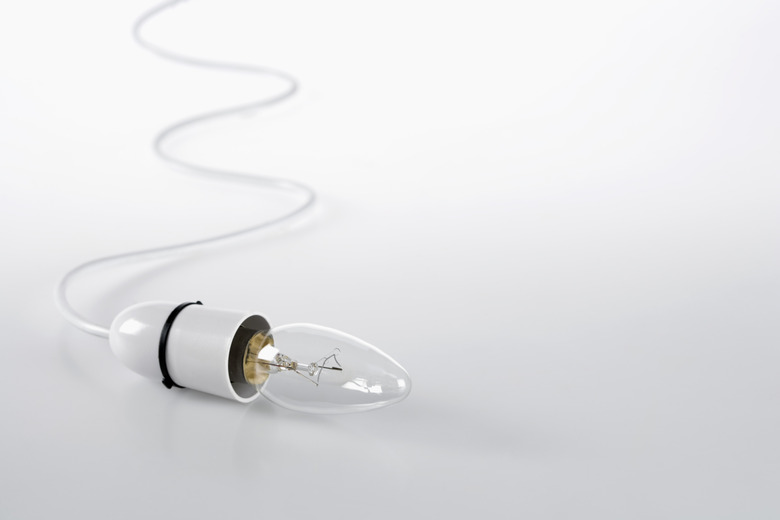How To Test A Schottky Diode
A Schottky diode, similar to a regular diode, limits the flow of electricity to one direction, much like the action of a one-way water valve. The Schottky diode, however, has an enhanced electrical response time because of a much lower voltage dissipation. Common malfunctions of a Schottky diode include electrical shorting and overheating.
Step 1
Turn the dial on the multimeter to the continuity test setting, which you use to tell whether the electrical current flows from one test lead of the digital multimeter to another. Most digital multimeters use the electrical symbol of a diode or a sound wave to indicate the continuity test setting.
Step 2
Insert the positive (red) test lead into the ohm meter connector and then place the other (black) common test lead into the common connector of the multimeter.
Step 3
Identify the cathode and anode leads of the diode. You will find the cathode closer than the anode to the painted line that encompasses the diode. Connect the red positive test lead to the anode of the Schottky diode and the black common test lead to the cathode of the diode.
Step 4
Listen for a "beep" or a "buzz" from the multimeter. If the Schottky diode responds as expected, the multimeter will sound a tone. If the multimeter does not sound a tone, the Schottky diode is not functioning correctly.
Step 5
Reverse the test leads of the multimeter by placing the positive test lead to the cathode and the common test lead to the anode of the diode. Observe whether the multimeter emits a tone. If the multimeter does not sound a tone, the Schottky diode is functioning correctly.
TL;DR (Too Long; Didn't Read)
A Schottky diode has an expected voltage drop of 0.15 to 0.45 volts as compared to the standard silicon silicon diode's 0.6 to 1.7 volts.
If you cannot identify the continuity test setting, refer to the owner's manual of your digital multimeter.
Warning
If the Schottky diode is in a circuit, power off the circuit before testing to avoid redirecting current through your multimeter, which can cause your multimeter to malfunction or damage it permanently.
Cite This Article
MLA
Mason, Kevin. "How To Test A Schottky Diode" sciencing.com, https://www.sciencing.com/test-schottky-diode-6920100/. 24 April 2017.
APA
Mason, Kevin. (2017, April 24). How To Test A Schottky Diode. sciencing.com. Retrieved from https://www.sciencing.com/test-schottky-diode-6920100/
Chicago
Mason, Kevin. How To Test A Schottky Diode last modified March 24, 2022. https://www.sciencing.com/test-schottky-diode-6920100/
